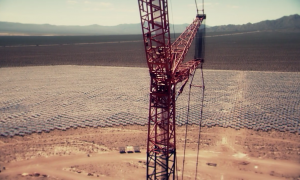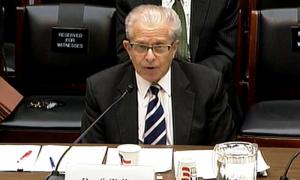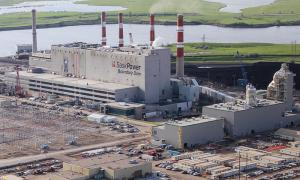
Advanced systems must be part of global effort to decarbonize
WHEN NEGOTIATORS FROM some 200 countries meet in Paris this December to seek a global climate agreement, they would be well served to fully recognize and support promising advancements being made in reducing carbon emissions from fossil fuels. Doing so would help prompt governments to create enabling policies and to make more robust investments in technologies such as carbon capture, use and storage (CCUS) and high efficiency, low emission (HELE) systems.
Technology advancements in these areas not only hold substantial promise; they are essential to achieve the long-term goal of global decarbonization. At the very least, low-emission fossil fuel technologies must serve as a bridge to the expanded use of renewables, which could take decades to achieve.
But there will be pressure at the Paris talks (called the 21st Conference of the Parties, or COP21) to take a different path, to rapidly phase out or even abandon fossil fuels. Some, like Christiana Figueres, the United Nations chief climate diplomat, argue that coal should be left in the ground. Extreme environmental groups that support this notion are actively pushing divestment from the fossil fuel industry so as to promote the industry's collapse. And it's not just coal that is under attack either; the Green Movement has turned up the heat against oil and natural gas industries as well.
The idea that the world should abandon fossil fuels is extreme and impractical. Global power generation, manufacturing and transportation systems are built around fossil fuels. Economies depend to a large degree upon them. And as nations develop and populations expand, there will be even more demand for them.
I believe that now is the time to seize on advances in technology that will enable the global community to get man-made greenhouse gas (GHG) emissions under control. If negotiators at COP21 were to support low-carbon fossil fuels as part of the solution with anywhere near the same enthusiasm as shown for renewables, they could help accelerate technology development and incentivize fossil fuel companies to play a greater role in GHG reductions.
CCS breakthrough can lead the way
THE WIDELY ACCLAIMED Boundary Dam 120-megawatt integrated carbon capture and storage project in Saskatchewan (which Boilermakers helped build) is a pivotal achievement for the future of fossil fuels. As the world's first utility-scale application of CCS to a coal-fired power plant, the project captures over 90 percent of carbon dioxide and processes it for enhanced oil recovery. More than any other project, Boundary Dam validates CCS technology. It can be done. It is being done.
Meanwhile, Southern Company's 524-megawatt Kemper CCS coal-fired power plant in Mississippi, scheduled for start-up in 2016, will be broadly analyzed as the first U.S. CCS facility built from the ground up. (CCS technology at Boundary Dam was added to an existing unit.) To be sure, Kemper has encountered serious difficulties, with major cost and schedule overruns. We will have to wait and see what lessons can be learned from this project and how successful its eventual operation will be.
But these CCS projects and others around the world show that with enough government support, public and private innovation, and investment, mankind can progress towards the continued use of fossil fuel energy while dramatically reducing GHG emissions.
There are, in fact, a host of technologies being researched that offer alternative ways to capture CO2, including pre-combustion, post-combustion, or actually harvesting it from the air around us. A breakthrough in any one of these technologies might open the door to major reductions in CO2 emissions. The more we can invest in research and development, the better chance we will have of seeing one or more of these innovations deliver a solution that is practical, affordable and repeatable around the globe.
High efficiency, low emission technology is already here
WHILE CCS IS not yet available for full-on commercial applications globally, the technology to operate coal-fired power plants that can reduce emissions on the order of 40 percent is already here. High efficiency, low emission (HELE) technology is used in supercritical and ultra-supercritical coal-fired units. Supercritical technology allows for increased pressures in the steam generation process, while ultra-supercritical uses both higher pressures and higher temperatures. HELE technology uses less coal per unit of energy produced and produces fewer emissions than plants without the technology (subcritical plants).
We do not take calls for ending the use of fossil fuels lightly. Not only would that course of action be impractical and unworkable as a response to climate change, it would needlessly imperil the livelihoods of our members and the wellbeing of their families and communities.
Boilermakers helped build the very first (and so far the only) ultra-supercritical power plant in the United States, the John W. Turk Plant in Fulton, Ark. The Turk plant is a model for the efficient use of coal without the use of CCS.
Because of the special alloys required and other considerations, HELE technology is expensive to develop, and cost remains a limiting factor in its universal application. And yet, about half of the new coal-fired plants being built today use HELE technology.
But of all the existing coal-fired power plants, about three quarters are subcritical, and most are at least 25 years old. Replacing these older plants with supercritical or ultra-supercritical facilities could go a long way toward cutting CO2 emissions. It is clear, however, that HELE technology alone, no matter how widely installed, cannot keep global warming below 2 degrees centigrade, the threshold that must be maintained to avoid catastrophic climate change, according to scientists.
A balanced and inclusive energy portfolio is essential to achieve that.
We need an inclusive approach in Paris
LIKE THOUSANDS OF other organizations, the Boilermakers union will be closely monitoring climate negotiations in December. The outcome will impact how nations go forward in dealing with global warming. As we have seen in both Canada and the United States, policy decisions and regulations can have negative effects on various industries, costing our members man-hours and jobs.
We do not take calls for ending the use of fossil fuels lightly. Not only would that course of action be impractical and unworkable as a response to climate change, it would needlessly imperil the livelihoods of our members and the wellbeing of their families and communities.
The most sensible approach is one that embraces the best technologies available for all energy sources — fossil fuels, wind, solar, hydro, thermal, nuclear and others. It is time for the United Nations Framework Convention on Climate Change (UNFCCC) to recognize the contributions of each energy source and to support any advancement that leads to reductions in GHG emissions.
No one energy source can suffice.
For additional information about COP21 and the latest news on climate change, visit ccs.boilermakers.org.




















0 Comments